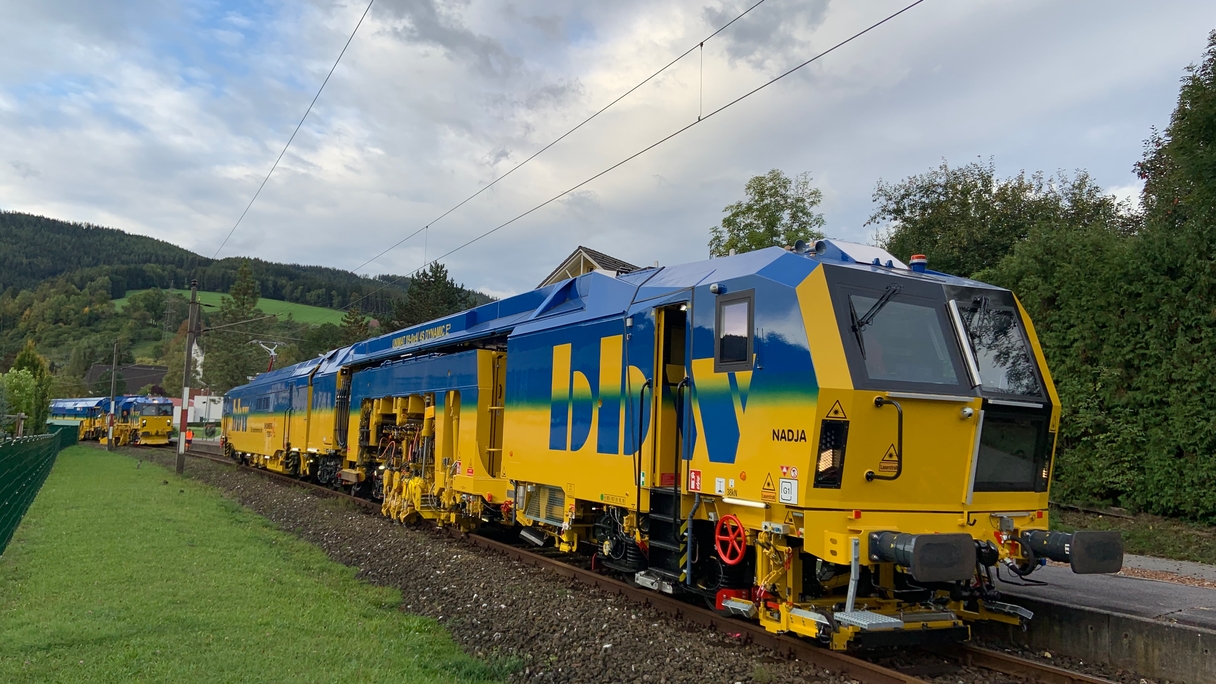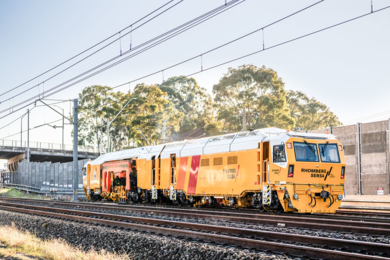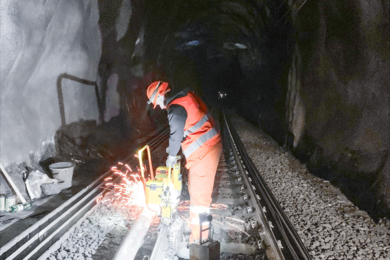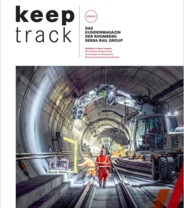Rhomberg Sersa Rail Group invests in sustainably powered rail vehicles
With its purchase around three years ago of two track construction machines featuring E³ technology, the Rhomberg Sersa Rail Group laid the foundations for a sustainably run machine pool. The next to arrive are locomotives with environmentally-friendly drive trains.
By the end of 2022, five Alstom Prima H4 locomotives, (Aem 940) in Switzerland, and one Siemens Vectron Dual Mode in Germany and Austria will augment the fleet for freight transport and construction site logistics deployment. All of the new locomotives are equipped with a bimodal drive system, meaning they can be powered via an environmentally-friendly electric contact wire. If none such exists, the locomotives switch to modern designed diesel engines. In this way, RSRG is not only contributing to achieving its own ambitious CO2 reduction targets, it is also helping its customers to meet their own sustainability goals. It also enables the realisation of innovative and reliable rail transport concepts.
Unimat 09-8x4/4S Dynamic E³ and BDS 2000-4 E³ - innovative E³ technology models
The acquisition of the two hybrid drive machines in 2019 saw the Rhomberg Sersa Rail Group leap into the technological ascendency. E³ stands for “Economic-Ecologic-Ergonomic”. These engines draw down environmentally-friendly power from the overhead contact wire, where available. Whenever the line is not equipped with a contact wire, all the energy will then be produced by a generator powered by the diesel engine. This technology also facilitates electrical braking. Here the kinetic energy is converted into electrical power by the drive motors, and fed back into the contact wire network (recuperation). In full-electric drive mode, the low noise emissions of the Unimat 09-8x4/4S Dynamic E³ tamping machine for tracks and points and the BDS 2000-4 E³ crushed rock distribution system make them both extremely quiet and genuinely environmentally compatible. For three years now, both of these large track construction machines have greatly contributed to the Bahnbau Wels machine pool.
BDS 2000-4 E³ innovations
- Environmentally-friendly hybrid system
- Reduction in noise emissions
- Braking energy fed back into the contact wire
- Reduced wear, e.g. to the braking components
- Ergonomic operator stations
Unimat 09-8x4/4S Dynamic E³ innovations
- All the same benefits of the hybrid system in the BDS 2000-4 E³
- Complete flexibility in tamping points
- Sleeper detection system
- Points tamping assistant
The Siemens Vectron Dual Mode locomotive - perpetually in motion
The Siemens Vectron Dual Mode combines the benefits of an electric locomotive with those of a diesel-powered engine. On the one hand, it can use any available contact wire network to power its drive train, and be environmentally-friendly by running purely on electrical power. If a stretch of line does not have a contact wire, the system switches to a powerful, modern diesel engine delivering approx. 2,000 kW of drive power. So it can always be on the move, able to perform its tasks even when no contact wire is present. The optional purely electric-powered drive means it also contributes to the reduction of CO2 emissions. In autumn 2022, a Siemens Vectron Dual Mode will be added to the Bahnbau Wels construction site logistics fleet, where it will be deployed in the transport of materials and track building machinery.
Factbox Siemens Vectron Dual Mode
- Electric-powered drive via contact wire; MTU diesel engine
- 160 km/h maximum speed
- 19.98 m long over buffers
- Traction power: 2,000 kW via electric drive or diesel engine
- Weight: 90 tonnes
- Twin traction mode available
- 2,600-litre tank
Alstom Prima H4 locomotives - setting new benchmarks
The Alstom Prima H4 locomotive platform is based on a modular serial drive train. In common with the Siemens Vectron Dual Mode, it can be powered either via contact wire or low-emissions diesel engine. The bimodal drive reduces the machine's fuel consumption by up to 50% so lowering its environmentally harmful emissions by 50%. “Bimodal” means that these locomotives can be electrically driven via contact wire with approx. 2,000 kW of power, or if no contact wire is installed, via the modern diesel engine delivering approx. 900 kW of power. So the Alstom Prima H4 is setting new benchmarks in terms of emissions efficiency. RSRG has already taken delivery of the first of this type of locomotive. In future, a total of five H4 Bi-Mode locomotives will be added to the machine pool of Sersa Group AG (Switzerland), where they will be deployed in the environmentally-friendly supply and removal of material to and from construction sites, as well as the rapid transport of track building machinery and innovative “last mile” rail freight transport solutions.
Factbox Alstom Prima H4 Bi-Mode
- Electric-powered drive via contact wire; Caterpillar diesel engine
- 120 km/h maximum speed
- 18.75 m long over buffers
- Traction power: 2,000 kW in electric model via contact wire; approx. 900 kW via diesel engine
- Weight: 84 tonnes (90 tonnes with ballasting)
- Multi-traction option
- 3,000-litre tank




